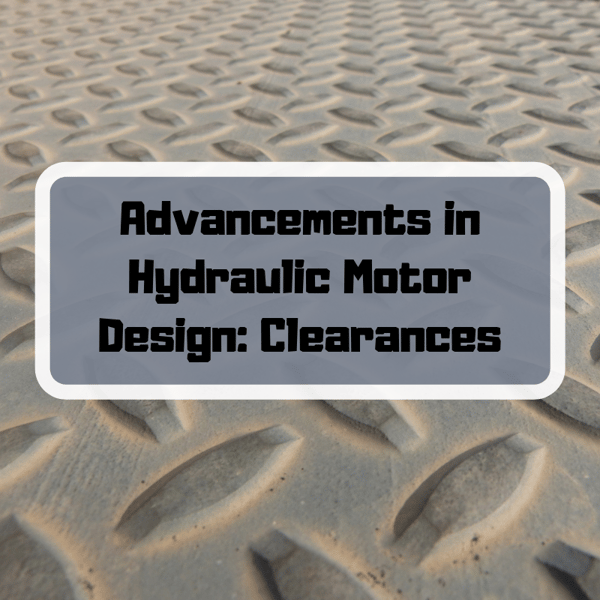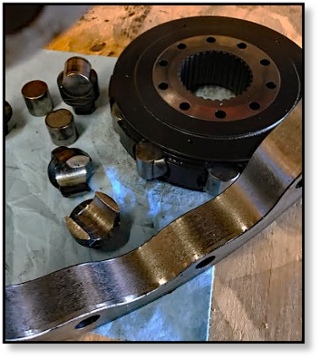The most modern hydraulic motor designs include clearances that are much smaller than those of older models. These smaller clearances, while providing even better efficiency and performance, can cause their own share of problems. That’s the topic of this Shop Talk Blog -- as well as how to deal with the problems that result from reduced clearances.

Here are some additional posts you may be interested in ...
- Hydraulic Contamination Issues in Newer Machines
- Abrasive Contamination and Final Drive Motors
- #1 Cause of Final Drive Failure
Precision, Accuracy, and Clearance
One of the major areas where final drive hydraulic motors are evolving seems to lie in the reduction of clearances between critical parts. Modern manufacturing equipment and techniques have evolved to support even better precision and accuracy. This, in turn, has made it possible to achieve even tighter clearances, allowing engineers to better optimize the internal leakage of final drive motors. This, in turn, allows for even better efficiency and performance. There are, however, complications.
Complications Due to Reduced Clearances
This is most clearly seen in radial piston and geroler motors, where fresh hydraulic fluid no longer meets the cleanliness requirements for these motors. Even brand new hydraulic fluid will have some degree of particulate contamination. The particles are considered extremely small by most standards, but they are still large enough to cause problems in the small clearances found in many new hydraulic motors. In fact, if particulate contamination is not kept in check, it can seriously damage your final drive motor.

New Hydraulic Fluid
In most cases, new hydraulic oil fluid has a typical cleanliness level of ISO 4406 23/21/18. The three numbers represent the number of particles larger than 4, 6, and 16 microns, respectively.
- 4 microns: between 40,000 and 80,000
- 6 microns: between 10,000 and 20,000
- 16 microns: between 320 and 640
Now here is the question: is this hydraulic fluid clean enough for newer hydraulic motors?
Contamination
The human eye cannot see anything less than 40 microns, which gives you an idea of how tiny these particles are. Baldwin Filter has an excellent discussion of microns in the context of filtering particles, and points out that bacteria has an average width of 2 microns, red blood cells are 8 microns wide, and white blood cells are 25 microns wide.

Hydraulic Fluid Analysis
The tiny size of these particles -- invisible to the human eye -- is why hydraulic fluid analysis is recommended for construction equipment. The results of fluid analysis give you an idea of how contaminated your hydraulic fluid is, including both the particulate matter dealt with here as well as degradation of the fluid over time and contamination by air and water.
Conclusion
Now, considering that even new hydraulic fluid does not meet the cleanliness requirements for many of the new hydraulic motors, you can see the advances made in achieving small clearances. This is also why it is important that you filter hydraulic fluid before placing it in a new hydraulic motor and have your hydraulic fluid analyzed regularly to detect potential issues before the damage is done.


